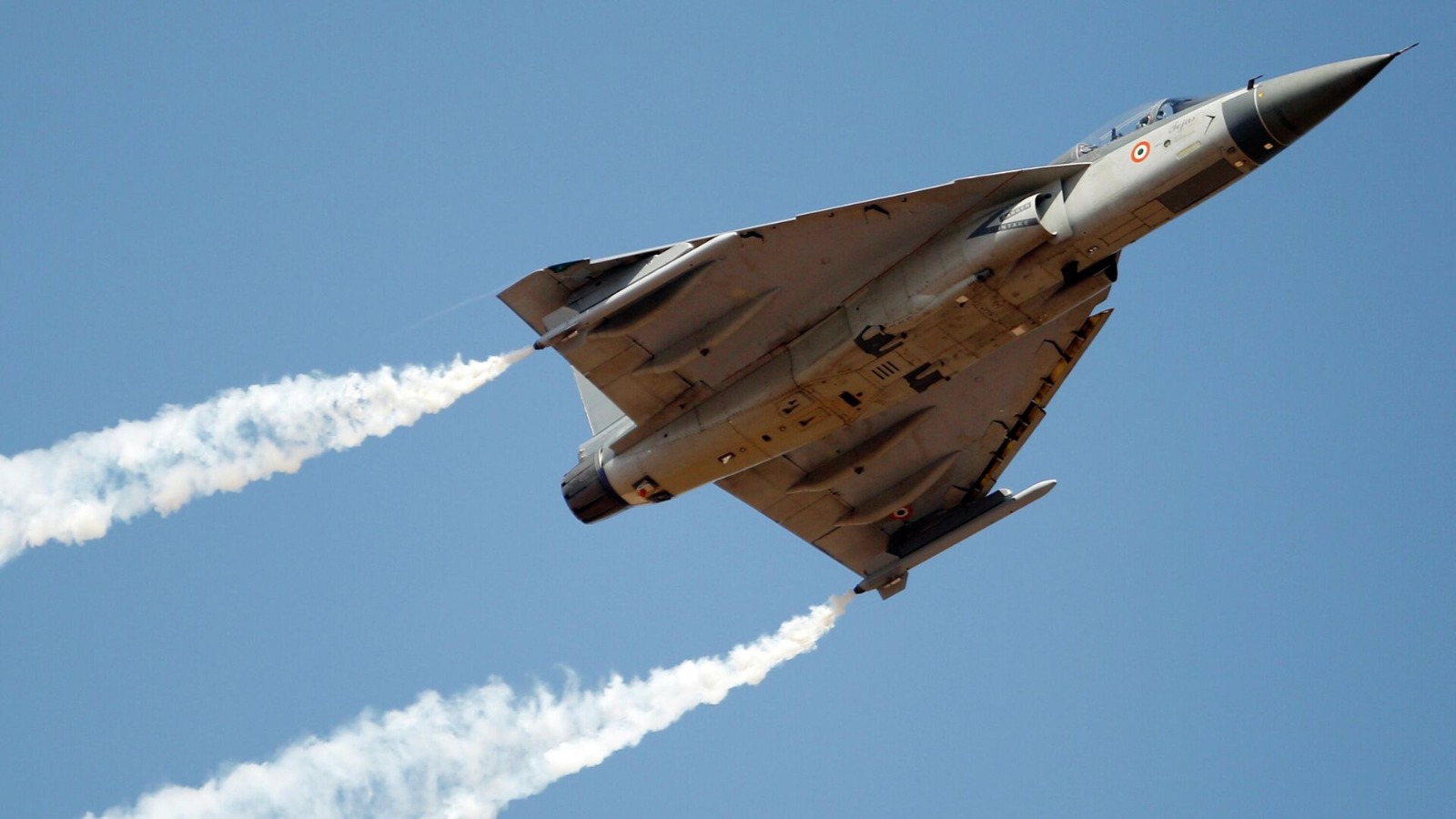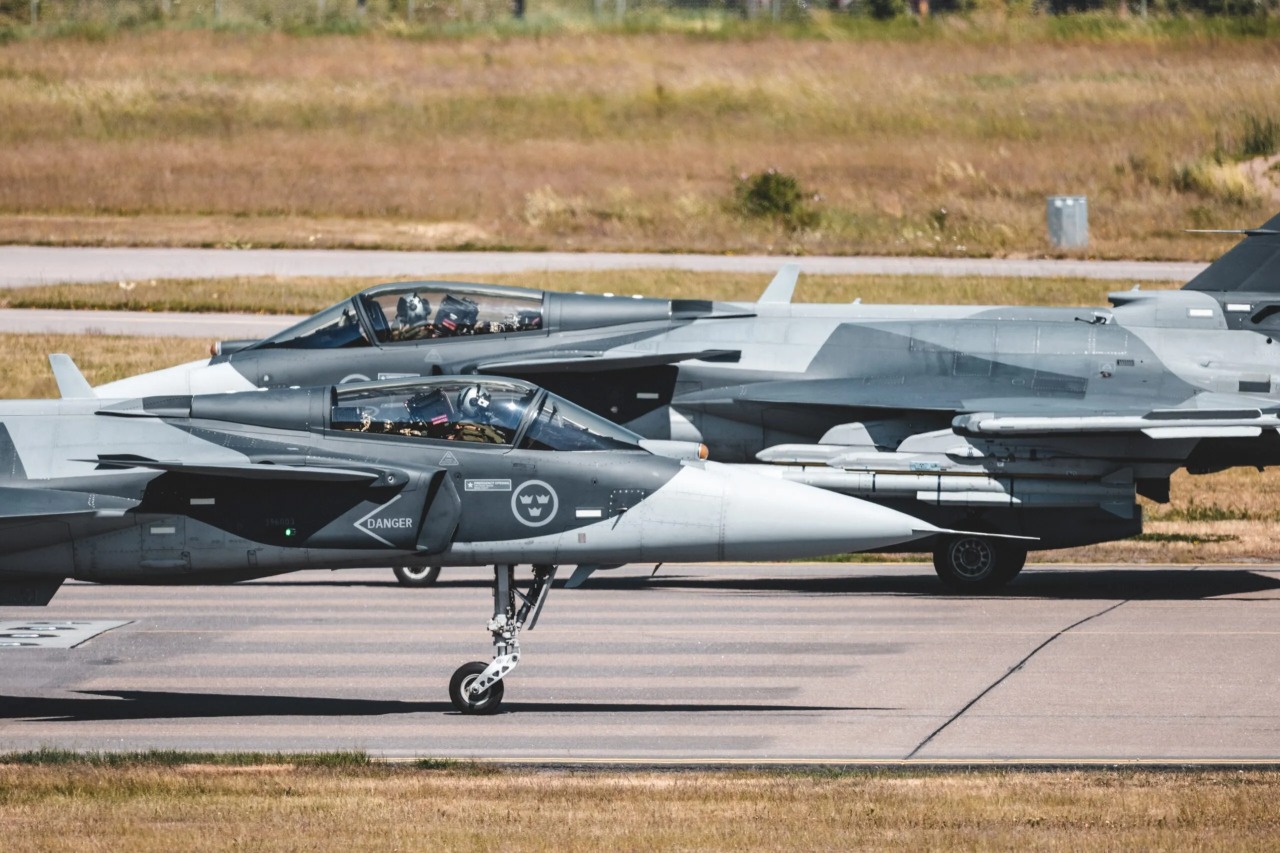JAS-39 Gripen: After ‘Downing’ Rafale Fighters In South America, Can Saab Stun Dassault For Indian MRFA Deal?

The new Indian Air Force (IAF) chief, Air Chief Marshal AP Singh, made a strong case for Medium-Role Fighter Aircraft (MRFA) in the face of delays in indigenous Light Combat Aircraft Mk1A and Mk2.
Swedish aircraft maker Saab has made an appealing offer to deliver the first Gripen E/F within three years if awarded the contract.
Taking the conversation forward, Saab Campaign Director and Head of Gripen for India Programme (Business Area Aeronautics) Kent-Ake Molin asserted that the Swedish firm was already exploring manufacturing opportunities in India to serve local and global markets with complete transfer of technology.
“We foresee that we can set up full-scale production in India, which will include everything, not just airframe, but also systems and software. We have a plan to rapidly indigenise the platform. We have had favorable discussions with a host of private partners who will support us in our indigenization efforts.”
The Indian branch of the Swedish subsidiary SAAB, which manufactures single-engine Gripen fighter jets, has been in the ring since the IAF expressed interest in importing 114 fighter jets. In 2023, it publicly offered its upgraded Gripen-E platform to the IAF in a statement published on its official account on Platform X (previously Twitter).
The IAF issued a Request for Information in 2018 for the acquisition of 114 fighter jets under MRFA, but there has been no forward movement on it for the last six years. The force is now awaiting an Acceptance of Necessity (AoN) from the Indian government before floating a tender for the same.
In the meantime, IAF’s fighter jet squadron strength is fast plummeting, and in the words of the new IAF Chief, the force needed the aircraft “as of yesterday.”
With the Modi government’s thrust on indigenization, supporters of ‘Make in India’ have been contending that even if the IAF signs the MRFA deal today, it will get the aircraft only in the next 6-7 years, by which time the LCA Mk2 will be ready.
During his first annual press conference after taking over as the IAF Chief, Air Chief Marshal Singh was asked why the IAF needs MRFA when LCA Mk2 will be ready in 6-7 years, and a foreign vendor will take the same amount of time to deliver the first MRFA.
AfriPrime App link: FREE to download...
https://www.amazon.com/Africircle-AfriPrime/dp/B0D2M3F2JT

Responding to a question by the EurAsian Times, Air Chief Marshal AP Singh countered: “It takes seven years for entire supplies to come. As far as LCA Mk2 is concerned, 2027 is supposed to be the time when the research and development stage will be over, and thereafter, the production stage will start. The LCA delivery started in 2016; I was posted in ASTE when the first induction took place. Today is 2024, and we have 38 aircraft with us.”
The force has agreed to acquire the MRFA under the ‘Make in India’ policy, where the aircraft will be licensed-produced in India. The Chief says this will help the IAF in carrying out upgrades and modifications to the aircraft as and when required. He cited the example of Jaguar, which has been produced by the Indian aircraft manufacturer Hindustan Aeronautics Limited (HAL).
The IAF Chief’s assertion also put the speculations to rest that the MRFA deal has been scrapped.
In response to this, Saab is looking to create an entire ecosystem for the Gripen in India. “We responded to the RFI for the MRFA deal in 2018, following which we have had engagements with the IAF to learn its requirements. We are working with our industry partners here on how to fully indigenize this platform, finding and building a blueprint for an ecosystem for them. We are well-prepared to rapidly deliver fighter aircraft to the IAF, supported by our Indian partners, within a three-year timeframe,” said Molin.
“The requirements of the future fighter are evolving constantly. Now, air forces have to keep pace with technology streams that involve AI and quantum. The challenge will be in absorbing these technologies rapidly and being able to keep them updated on a daily basis,” Molin told an Indian newspaper in Bangalore.
The constant upgrades on mission software mean that the aircraft will receive the code in the morning and fly in the afternoon. The disruptive design will make upgradation easier.
For the IAF tender, Gripen is competing against Boeing’s F/15EX, Lockheed Martin’s F-21, Dassault’s Rafale, and three other prominent combat jets from around the world.
Advantage Gripen-E
The single-engine Gripen E is the most modern fighter in the competition. Its weaponry, including the Meteor Beyond Visual Range missile, will give the IAF an edge against its adversaries.
The latest high-performance sensors, such as the AESA radar, IRST system, advanced datalinks, and AI-enabled decision support, give the pilot superior situational awareness and the ability to see first and act first.
Hospital Management Platform SaaS.. Hospital and Patients management system perfect for all medicals.
Partnership/Agent Needed. Earn As You Go on monthly basis.
Contact Admin: admin@healthdata101.com
+++++++++++++++++++++++++++++++++++++++++++++++++++++

As previously reported that while the Gripen-E is very appealing in terms of its advanced electronic warfare capability, integration of strong missiles, reduced radar cross-section, and low operating cost, the jet still seems to be losing out to its competitors on two rather important fronts—political clout and economic backing. The IAF is also not keen on a single-engine aircraft.
Gripen E can carry nine missiles and 16 bombs, as well as a large suite of other weapons and payloads. The aircraft’s design also enables easy integration of new weapon systems and stores for all missions, from air-to-air missiles to reconnaissance and heavy air-to-ground armament.
For now, Rafale appears to be a strong contender for the Indian Air Force despite the IAF scouting for fifth-gen options. The US is very keen to enter the IAF’s fighter jet ecosystem after dominating the Indian Navy with a variety of platforms. Saab is an underdog, but it did manage to stun Dassault Rafales for the Brazil fighter deal. It would be interesting to see if it can do something similar in India.
Catching Up With PLA Air Force
In a blunt assessment of the IAF’s capability, Air Chief Marshal Singh had said that while the force is ahead of its Chinese counterpart in terms of training and exposure, it is lagging behind in terms of technology.
HAL’s inability to execute its promises means that the IAF’s force level is approaching that of 1965, with only 31 fighter jet squadrons.
“As far technology is concerned, we are lagging. We were better than them sometime back, we are lagging in that. We need to catch up. In terms of manufacturing (aircraft and equipment), we are lagging behind,” Air Chief Marshal Singh said.
Talking about India’s aircraft manufacturing capability, the Chief said that the first LCA was delivered to the IAF in 2016, and by 2024, only 38 of these indigenous aircraft were supplied. He said this needs to be ramped up.
In contrast to this, China has been deploying its homemade fighter jets along the Line of Actual Control (LAC) at an alarming rate. China has deployed its J-10 Vigorous Dragon fighters just 300 kilometers from the Indian base that is home to Rafale fighter jets.
India will need many aircraft to maintain combat parity with the People Liberation Army-Air Force (PLAAF), which will remain the IAF’s primary adversary for years to come. The deterrence capability has to keep pace with the existing threat perception. The required minimum deterrence value must be maintained at all times (either by domestic production or outside procurement).
Despite India’s ambitious line-up of indigenous fighter jets, China could deploy 1000 J-20 ‘Mighty Dragon’ 5th-generation jets by the time the Advanced Medium Combat Aircraft (AMCA) starts flying.
After being the second country in the world to have an operational 5th-generation fighter jet in its fleet, China is already moving to develop 6th-generation fighter jet technologies.
J-20 is a twinjet all-weather stealth 5th-generation fighter aircraft designed by China’s Chengdu Aerospace Corporation of the People’s Liberation Army Air Force (PLAAF). It took to the skies for the first time on January 11, 2011, and was officially revealed in 2016.
The Mighty Dragons entered service in 2017, and PLAAF already has over 200 fighter jets in its fleet. The goal is to take the number to 400 by 2027 and 1,000 by 2035.
AfriPrime App link: FREE to download...
- Questions and Answers
- Opinion
- Story/Motivational/Inspiring
- Technology
- Art
- Causes
- Crafts
- Dance
- Drinks
- Film/Movie
- Fitness
- Food
- Παιχνίδια
- Gardening
- Health
- Κεντρική Σελίδα
- Literature
- Music
- Networking
- άλλο
- Party
- Religion
- Shopping
- Sports
- Theater
- Wellness
- News
- Culture
- War machines and policy

